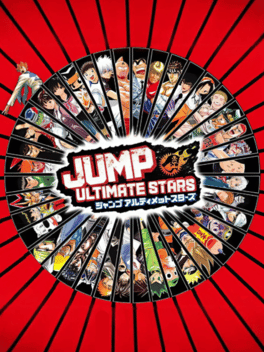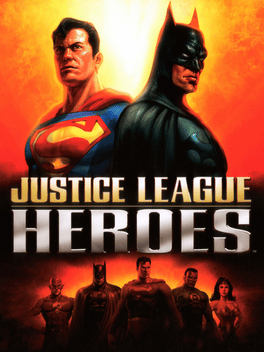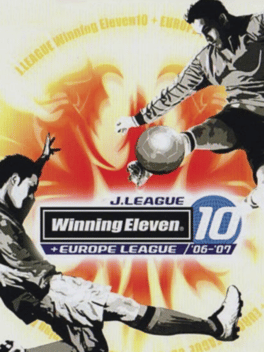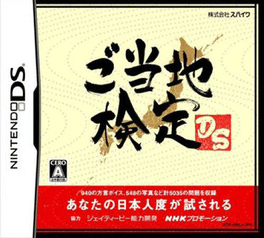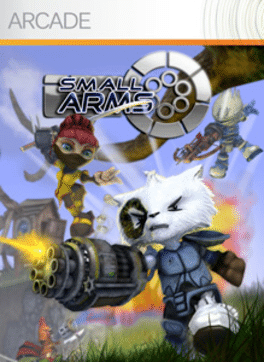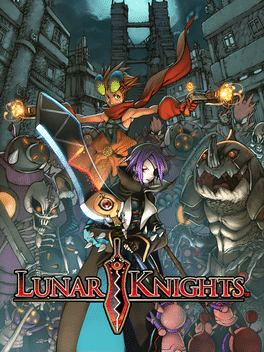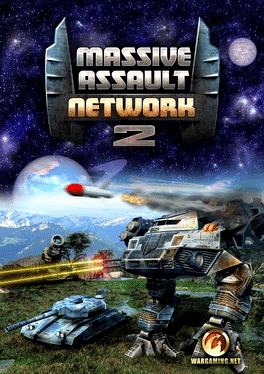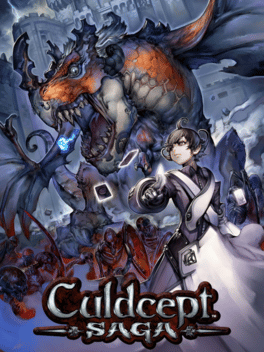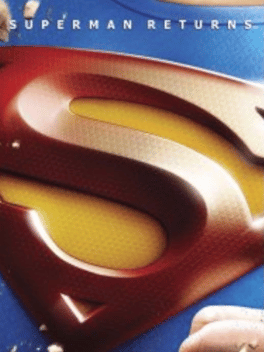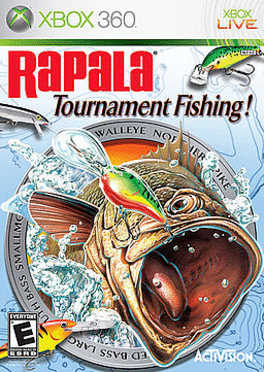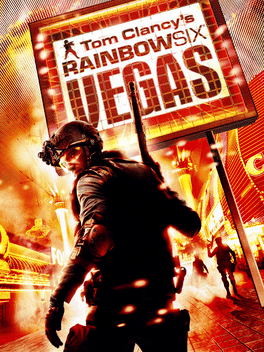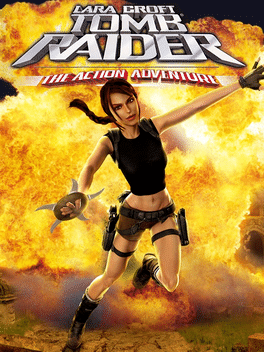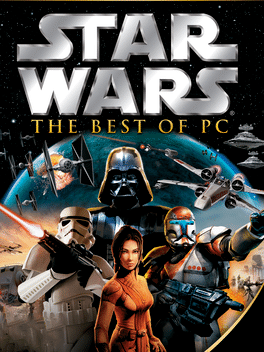New Games - Page 10192
-
Tasty Planet
2006
Tasty Planet
2006
star 6.7Control a tiny ball of grey goo with the ability to eat anything smaller than itself. The more it eats, the bigger it gets! Soon you'll be able to eat the entire planet! -
Jump Ultimate Stars
2006
Jump Ultimate Stars
2006
star 7.5Jump Ultimate Stars is a fighting video game developed by Ganbarion and published by Nintendo for the Nintendo DS. It is the sequel to Jump Super Stars. The game was released in Japan on November 23, 2006. The game keeps many features from its predecessor, and adds many more. The game boasts 305 characters (56 of which are fully playable) from 41 different Shōnen manga series. -
Oshare Majo: Love and Berry DS Collection
2006
Nintendo DS port of the fashion and rhythm arcade game by Sega. The game features collectible cards and requires a Sega card reader to scan the cards. -
Tenshou Gakuen Gekkouroku
2006
The sequel to Tenshou Gakuen Gensouroku, taking place 5 years after the previous game. -
J.League Winning Eleven 10 + Europe League 06-07
2006
J.League Winning Eleven 10 + Europe League 06-07 is a sports video game developed and published by Konami for the PlayStation 2. Released exclusively in Japan on November 22, 2006, this title combines elements from the Pro Evolution Soccer 6 series with additional content specific to Japanese and European football leagues. -
Wonderful World
2006
-
Gotouchi Kentei DS
2006
-
Curling DS
2006
-
Small Arms
2006
Small Arms
2006
star 6.6And arcade Shoot'em/beat'em up/platformer. You plays as various humanoids that battle each other in arena combat. -
Jeanne d'Arc
2006
Jeanne d'Arc
2006
star 7.7Jeanne d'Arc is a tactical role-playing video game loosely based on the story of Joan of Arc and her struggles against the English occupation of France during the Hundred Years' War in the early 15th century. The game has an amount of historical accuracy when it comes to the cast of characters, and contains many who were contemporaries and allies of Joan of Arc. This contrasts starkly with the many fantasy elements of the game, such as characters possessing magical armlets that give the wearer special abilities, and the suggestion that King Henry VI of England was possessed by demons and used them to aid his armies in destroying France during the Hundred Years' War. -
Lunar Knights
2006
Lunar Knights
2006
star 6.2Descend into the gothic Sci-Fi world of Lunar Knights and take control of two warriors on a quest to reclaim the world from the vampiric legion. Spin together tornados, guide down flaming meteors, and blow together snowstorms in Kojima Productions first ever title on Nintendo DS! -
Massive Assault Network 2
2006
Massive Assault Network 2 is turn-based. However, it uses cutting edge 3D technology, which makes it look like RTS. Plus, the engine allows you to move a couple of units in a close sequence so that visually they move and shoot simultaneously producing RTS-style visual effects. -
Culdcept Saga
2006
Culdcept Saga
2006
star 7.4Culdcept Saga (カルドセプト サーガ Karudoseputo Saaga?) is a video game developed exclusively for the Xbox 360 video game console. It is the first entry for a Microsoft console in the Magic-meets-Monopoly game franchise that included previous installments on the PlayStation, PlayStation 2, Sega Saturn and Dreamcast. A demo of the title was made available to Xbox Live users on December 4, 2007. The demo includes two different pre-made card decks and supports both single player gameplay and local multiplayer for up to four players.[1] Initially released in Japan in 2006, the full game wasn't released in North America until more than a year later, in February 2008, but has never been released in Europe or Australia. -
Superman Returns: The Videogame
2006
star 5.2Superman Returns is a video game based on the movie of the same name, It was developed by EA Tiburon and published by Electronic Arts in conjunction with Warner Bros. Interactive Entertainment and DC Comics. It features a story arc from the movie, which was released on June 28, 2006, and more than 60 years of comic book content. EA Tiburon, known for its Madden NFL game series, has claimed that the game combines strong creative vision and compelling new technology to deliver a powerful and emotional gaming experience to their consumers, and they will experience a real sense of flying while mastering Superman's superhero powers to save Metropolis. In the game, Superman combats Bizarro, who does not appear in the movie, as well as other classic villains (including Mongul) as well as being able to play as Bizarro for a short period of time in one of the many minigames inserted into the game. The game was produced for the Xbox 360 as well as the Playstation 2 and Nintendo DS. A port for the PlayStation Portable was pl -
Tom Clancy's Rainbow Six: Vegas
2006
star 8Tom Clancy's Rainbow Six makes its next-generation hardware debut in the most dramatic installment of the renowned first-person shooter franchise to date. Experience Las Vegas like never before – through revolutionary next-generation technology as you work against the clock to keep one of the world's most recognizable cities from utter devastation. -
Chiiku Drill Pocket Monsters Diamond & Pearl: Moji Kazu Chie Asobi
2006
Chiiku Drill Pocket Monsters Diamond & Pearl: Moji Kazu Chie Asobi is an educational game based on the Pokemon series. More than 60 Pokemon will appear! -
Tomb Raider: The Action Adventure
2006
Tomb Raider: The Action Adventure is an interactive movie based on Tomb Raider: The Angel of Darkness. The game does not only feature the same story line as that game, it is entirely built around video footage of it. Therefore the player sees Lara from a third-person perspective like in other games in the series as she runs, jumps and climbs around the levels, but for most of the time there is no control over her movement. At certain times the video stops and the player gets to choose what Lara should do next. The game is mainly controlled with the remote control's arrow buttons which are context sensitive depending on what Lara has around her. What each button does in a situation appears on the screen. It can for example say "jump", "climb stairs" and "open door". Some commands lead to progress through the game, while others lead to a Game Over screen. Some might be harder, but will make the player earn points, for example when choosing to explore when short on time. When enemies appear it is often possible to ch -
Star Wars: The Best of PC
2006
Star Wars: The Best of PC is a compilation of five computer games. Star Wars: Battlefront Star Wars: Empire at War Star Wars: Jedi Knight II: Jedi Outcast Star Wars: Knights of the Old Republic Star Wars: Republic Commando


